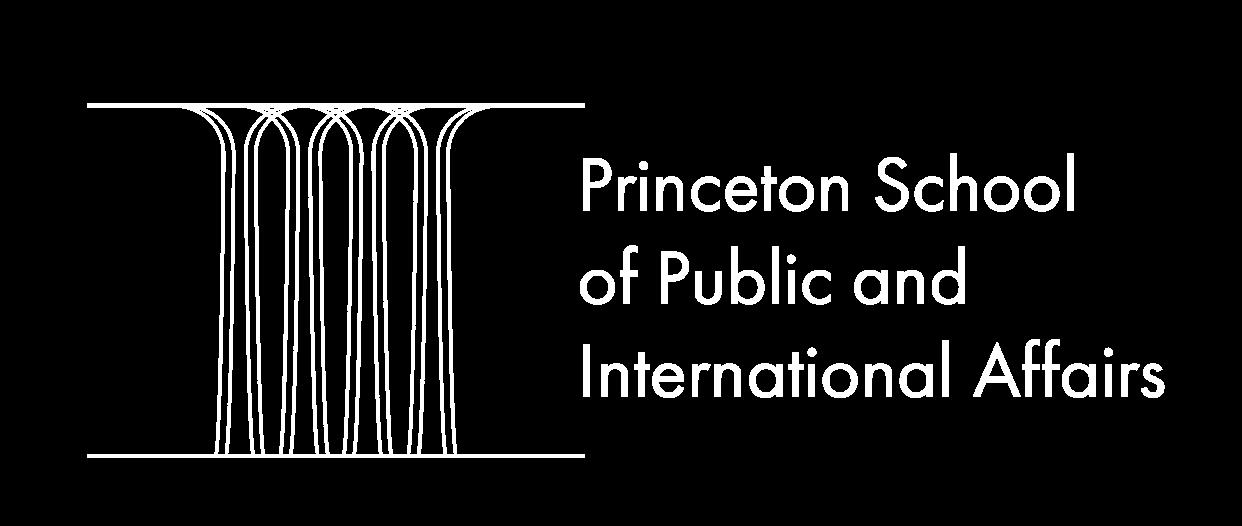
4 minute read
Endnotes
1 Of this total approximately half was sourced through public aid, such as governmental transfers, and half through private aid, such as individual gifts and contributions. Data on public aid sourced from the World Bank, “Total Official and Private Aid Flows:” https://data.oecd.org/drf/total-official-and-private-flows. htm; Data on private aid sourced from: Ruth McCambridge, “2020 Giving USA Report Both Surreal and Suggestive of Larger Change Needs,” Nonprofit Quarterly, June 16, 2020. https://nonprofitquarterly. org/2020-giving-usa-report-both-surreal-and-suggestive-of-larger-change-needs/ 2 Ruth McCambridge, “2020 Giving USA Report Both Surreal and Suggestive of Larger Change Needs,” Nonprofit Quarterly, June 16, 2020. https://nonprofitquarterly.org/2020-giving-usa-report-both-surreal-andsuggestive-of-larger-change-needs/ 3 The Life You Can Save, “Our Story,” accessed Dec. 4, 2020, https://www.thelifeyoucansave.org/our-story/ 4 The Life You Can Save, “How We Curate Our Charities,” accessed Dec. 4, 2020, https://www.thelifeyoucansave.org/recommended-charities-methodology/ 5 The Life You Can Save, “Our Story,” accessed Dec. 4, 2020, https://www.thelifeyoucansave.org/our-story/ 6 Peter Singer, 2019, The Life You Can Save: How to Do Your Part to End World Poverty (10th Anniversary Edition), The Life You Can Save: Bainbridge Island, Wash. 7 T. Scott Bentley and Nick J. Ortner, 2020, “2020 U.S. Organ and Tissue Transplants: Cost Estimates, Discussion, and Emerging Issues,” milliman. https://milliman-cdn.azureedge.net/-/media/milliman/pdfs/ articles/2020-us-organ-tissue-transplants.ashx 8 The Life You Can Save, “Calculate The Impact You Can Have,” accessed Dec. 9, 2020, https://www. thelifeyoucansave.org/impact-calculator/ 9 The Life You Can Save, “Best Charities,” accessed Dec. 9, 2020, https://www.thelifeyoucansave.org/ best-charities/ 10 The Life You Can Save, “Giving Games,” accessed Dec. 4, 2020, https://www.thelifeyoucansave.org/ giving-games/ 11 Jon Behar, “Are Giving Games a Better Way to Teach Philanthropy?” The Life You Can Save, May 8, 2017, https://www.thelifeyoucansave.org/blog/are-giving-games-a-better-way-to-teach-philanthropy/ 12 Effective Altruism Survey 2019 Series: Community Demographics and Characteristics (Dec. 2019), Rethink Priorities, https://www.rethinkprojects.org/easurvey 13 Center for Disaster Philanthropy, “Disaster Profiles,” accessed Dec. 8, 2020. https://disasterphilanthropy.org/our-approach/disasters/ 14 Dean Karlan, Piyush Tantia, and Sarah Welch, “Behavioral Economics and Donor Nudges: Impulse or Deliberation? (SSIR),” Stanford Social Innovation Review: Informing and Inspiring Leaders of Social Change, January 15, 2019, https://ssir.org/articles/entry/behavioral_economics_and_donor_nudges_impulse_or_deliberation, 1. 15 R.H. Thaler and Cass Sunstein. (2008). Nudge: Improving decisions about health, wealth, and happiness. New Haven, CT: Yale University Press. 16 Richard H. Thaler, Cass R. Sunstein, and John P. Balz, “Choice Architecture,” SSRN Electronic Journal, April 2, 2010, https://doi.org/10.2139/ssrn.1583509 17 Ibid. 18 Stanford Encyclopedia of Philosophy: https://plato.stanford.edu/entries/social-norms/ 19 Paul Bloom, “Against Empathy,” Boston Review, April 10, 2019, http://bostonreview.net/forum/paulbloom-against-empathy 20 Javier E. Portillo, Joseph Stinn. “Overhead aversion: Do some types of overhead matter more than
others?” Journal of Behavioral and Experimental Economics 72 (2018): Pages 40-50. 21 Dorina Hysenbelli, Enrico Rubaltelli, and Rino Rumiati, “Others’ Opinions Count, but Not All of Them: Anchoring to Ingroup versus Outgroup members’ Behavior in Charitable Giving,” Judgment and Decision Making 8, no. 6 (2013): pp. 686-687. 22 See H. Cronqvist, & R. Thaler. (2004). Design choices in privatized social security systems: learning from the Swedish experience. American Economic Review, 94, 424–428. and B. C. Madrian and D.F. Shea. (2001). The Power of Suggestion: Inertia in 401(k) Participation and Savings Behavior. Quarterly Journal of Economics, 116, 1149–1187. 23 See Johnson, E. J., Hershey, J., meszaros, J., & kunreuther, H. (1993). Framing, probability distortions, and insurance decisions. Journal of Risk and Uncertainty, 7, 35–53. 24 See kunreuther, H. (2014). Aiding Decision making to Reduce the Impacts of Climate Change. Journal of Consumer Policy, 37 (3), 397-411. 25 See Johnson, E. J., & Goldstein, D. G. (2003). Do defaults save lives? Science, 302, 1338–1339. 26 Jonathan F. Schulz, Petra Thiemann, and Christian Thöni. “Nudging generosity: Choice architecture and cognitive factors in charitable giving.” Journal of Behavioral and Experimental Economics 74 (2018): 139-145. 27 Emre Soyer and Robin M. Hogarth. “The size and distribution of donations: Effects of number of recipients.” Judgment and Decision Making 6, no. 7 (2011): 616. 28 Sarah Smith, Frank Windmeijer, and Edmund Wright, 2015. “Peer Effects in Charitable Giving: Evidence from the (Running) Field,” Economic Journal, Royal Economic Society, vol. 125(585), pages 10531071, June. http://www.bristol.ac.uk/media-library/sites/cmpo/migrated/documents/wp290.pdf 29 This approach is best understood as the mechanism for GoFundme’s website. 30 Judd B Kessler, and Katherine L. Milkman. “Identity in charitable giving.” Management Science 64, no. 2 (2018): 845-859. 31 Ernst Fehr and Simon Gächter. “Fairness and retaliation: The economics of reciprocity.” Journal of Economic Perspectives 14, no. 3 (2000): 159-181. 32 Armin Falk. “Gift exchange in the field.” Econometrica 75, no. 5 (2007): 1501-1511. 33 The warm-glow effect is the emotional reward of ‘doing something for someone else.’ It is the feeling one receives through an altruistic action. 34 Deborah A. Small, George Loewenstein, and Paul Slovic, “Sympathy and Callousness: The Impact of Deliberative Thought on Donations to Identifiable and Statistical Victims,” Organizational Behavior and Human Decision Processes 102, no. 2 (2007): p. 144, https://doi.org/10.1016/j.obhdp.2006.01.005 35 Ibid, 149. 36 According to reference dependent sympathy, victims who have experienced a sudden loss in their fortunes are generally viewed with more empathy than victims who are chronically poor, sick, etc. 37 K. Sudhir, Subroto Roy, Mathew Cherian (2016:) “Do Sympathy Biases Induce Charitable Giving? The Effects of Advertising Content,” Marketing Science 35(6): 866, https://doi.org/10.1287/mksc.2016.0989 38 Uri Gneezy, Elizabeth A. Keenan, and Ayelet Gneezy. “Avoiding overhead aversion in charity.” Science 346, no. 6209 (2014): 632-635, doi 10.1126/science.1253932. 39 Lucius Caviola, Nadira Faulmüller, Jim AC Everett, Julian Savulescu, and Guy Kahane. “The evaluability bias in charitable giving: Saving administration costs or saving lives?” Judgment and Decision Making 9, no. 4 (2014): 303. 40 The Life You Can Save’s website. 41 Portillo, Javier E., and Joseph Stinn. “Overhead aversion: Do some types of overhead matter more than others?” Journal of Behavioral and Experimental Economics 72 (2018): 40-50. 42 Dorina Hysenbelli, Enrico Rubaltelli, and Rino Rumiati, “Others’ Opinions Count, but Not All of Them: Anchoring to Ingroup versus Outgroup members’ Behavior in Charitable Giving,” Judgment and Decision Making 8, no. 6 (2013): pp. 686-687. 43 This additional step is important. For example, taxpayers would likely agree that the website of their country’s tax authority applies to them, but reading tax documents is not fun and people would likely avoid it unless they are forced to do so.







